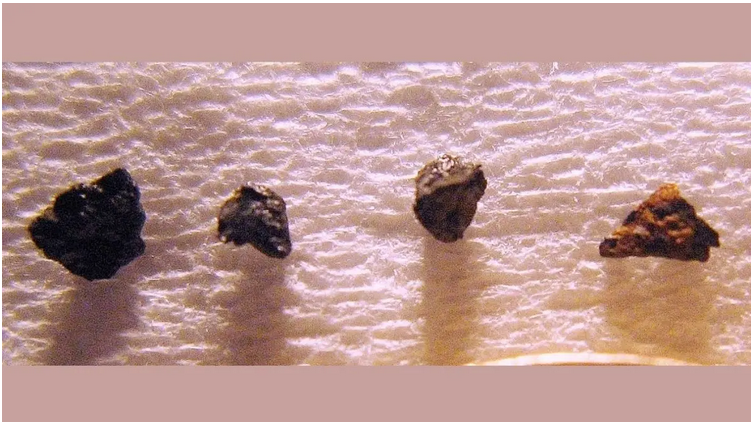!Finding a stone from outside the planet in Egypt as the first evidence of a rare supernova
One of the most energetic events in the universe is "standard wax" (type LA) supernova explosions that occur when a dense white dwarf star forms from a dying red giant star. Now scientists believe they have found the first evidence on Earth of such a supernova.
The claim came after a detailed study of the extraterrestrial Hypatia stone found in Egypt in 1996. Tale signs, including rock engravings and chemical composition, indicate that the pieces contain bits of dust and a gas cloud surrounding the supernova.
Over billions of years, this mixture of dust and gas would have turned solid, the researchers say, eventually forming the parent body from which Hypatia came from around the time our solar system first appeared.
Using detailed, non-destructive chemical analysis techniques, the research team looked at 17 different targets on a small sample of Hypatia, so it was all about gathering clues about where the stone was located and how it formed.
Those clues included significantly lower levels of silicon, chromium, and manganese, indicating that the rocks did not form in the inner Solar System. The researchers also noticed high levels of iron, sulfur, phosphorous, copper and vanadium, making the body again different from anything in our region in space.
Looking at the concentration patterns of Hypatia, he found marked differences from what we would expect to have formed in rocks from within the solar system, and ongoing analyzes rule out the idea that the rock formed from another giant star.
Of the 15 elements analyzed in the stone, many matched what would be expected if the object had come from the explosion of a dense white dwarf star; However, there are still six other elements that do not match the models of a Type 1a supernova: aluminium, phosphorous, chlorine, potassium, copper, and talc. However, researchers believe there is something in the supernova's past that could explain this.
"Because a white dwarf star consists of a dying red giant, Hypatia has inherited these proportions of elements for the six elements from a red giant star, and this phenomenon has been observed in white dwarf stars in other research," says researcher Krams, who led the study.
It is worth noting that the name Hypatia is derived from the Greek hypatos, which means "the sublime".
https://www.arageek.com/news/this-could-be-the-first-evidence-on-earth-of-a-standard-candle-supernova-explosion?fbclid=IwAR3kLHZIMAtXUcIX64logUo8In1qVVEyL92f-3oG6oVttGqmO00tM9qYtGA


